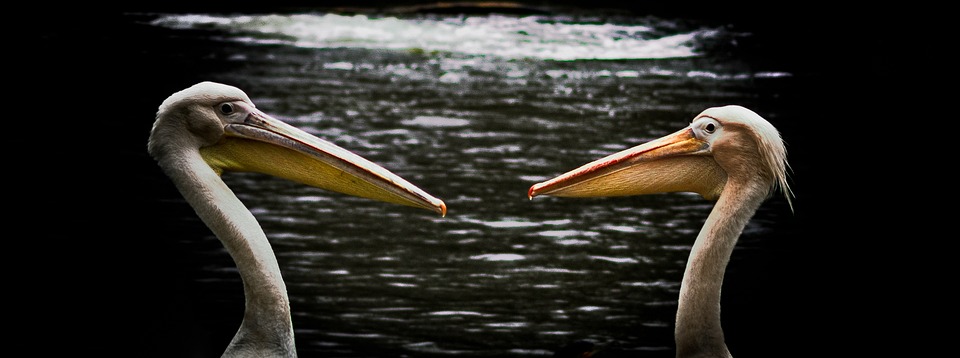In the world of fish tanks, there is much more to the hobby than simply admiring the beauty of these aquatic creatures. Fish tank enthusiasts often find themselves captivated by the fascinating mating behavior exhibited by their underwater pets. Understanding the intricacies of fish mating can help aquarists create a suitable environment for successful reproduction. In this article, we will delve into the various aspects of fish mating behavior, including courtship rituals, breeding habits, and the significance of environmental factors. We will also address common questions and provide answers to help fish keepers navigate this captivating topic.
Courtship Rituals: A Prelude to Fish Mating
Courtship behavior is a crucial aspect of fish mating. It involves a series of actions and displays that serve to attract a mate. Fish employ various methods to communicate their intentions and availability to potential partners. Visual displays and coloration changes are common courtship behaviors observed in many fish species. Bright colors, patterns, or even the development of special body structures can be used to entice a potential mate. Some fish also engage in vocalizations and acoustic communication to signal their readiness to breed. Additionally, territoriality plays a significant role during courtship, as fish may defend their territory to assert dominance and attract potential partners.
Breeding Habits: From Spawning to Parental Care
Fish employ different breeding techniques depending on their species. Some are known as egg scatterers, meaning they release their eggs into the water, while others are substrate spawners, which lay their eggs on a chosen surface. Nest building and preparation are common behaviors observed in many fish species. Male fish often construct nests or spawning sites to attract females. The fertilization process varies among fish, with some species practicing external fertilization, where the male releases sperm over the eggs after they are laid, and others practicing internal fertilization. After fertilization, some fish exhibit parental care by guarding their eggs and fry, ensuring their safety and survival. This behavior can be observed in species such as cichlids and bettas.
Environmental Factors: Influencing Fish Mating Behavior
Several environmental factors can influence fish mating behavior. Water parameters, including temperature, pH, and hardness, play a crucial role in successful breeding. Certain fish species require specific water conditions to trigger breeding behaviors. Lighting conditions also impact the reproductive cycles of some fish, with changes in light duration and intensity affecting their mating behavior. Tank size and setup considerations are important as well, as some fish require larger tanks or specific structures to create suitable nesting or hiding spots. Adequate hiding spots are essential for mating and fry protection, as they provide a sense of security for the parents and offspring. Additionally, water quality and filtration systems greatly influence the overall health and breeding success of fish.
FAQs (Frequently Asked Questions)
Q1: How can I encourage fish in my tank to mate?
A: Creating a suitable environment with appropriate water conditions, proper nutrition, and hiding spots can stimulate fish to breed. Additionally, understanding the specific mating rituals and behaviors of your fish species can help you recreate their natural habitat.
Q2: Do all fish lay eggs, or are there live-bearing species?
A: While most fish lay eggs, some species are live-bearers. Live-bearing species give birth to live fry instead of laying eggs. Examples include guppies, mollies, and swordtails.
Q3: How long does it take for fish eggs to hatch?
A: The time required for fish eggs to hatch varies depending on the species. It can range from a few days to several weeks. Researching the specific species you have will provide more accurate information on their breeding and hatching timelines.
Q4: Should I separate the parents from the eggs and fry?
A: It depends on the fish species. While some fish diligently protect their eggs and fry, others may consume them. If you notice the parents displaying aggression towards the offspring, it is recommended to separate them to ensure the survival of the fry.
Q5: Can I artificially induce fish to breed?
A: Yes, some fish species can be artificially induced to breed through specific techniques such as temperature manipulation, hormone injections, or simulating rainfall. However, it is crucial to thoroughly research the species and consult with experienced breeders before attempting artificial breeding methods.
Q6: Is it necessary to provide additional food for breeding fish?
A: Yes, during the breeding process, it is beneficial to provide a varied diet that includes protein-rich foods like live or frozen brine shrimp, daphnia, or bloodworms. Ensuring a balanced diet will support the overall health and breeding success of your fish.
Conclusion
Understanding the intricate mating behavior of fish tank fish allows aquarists to replicate natural conditions and promote successful breeding. By observing courtship rituals, recognizing breeding habits, and controlling environmental factors, fish enthusiasts can create an optimal environment for their beloved aquatic pets. Remember, each fish species has its unique requirements, so thorough research and careful consideration are essential for successful breeding in your fish tank.









